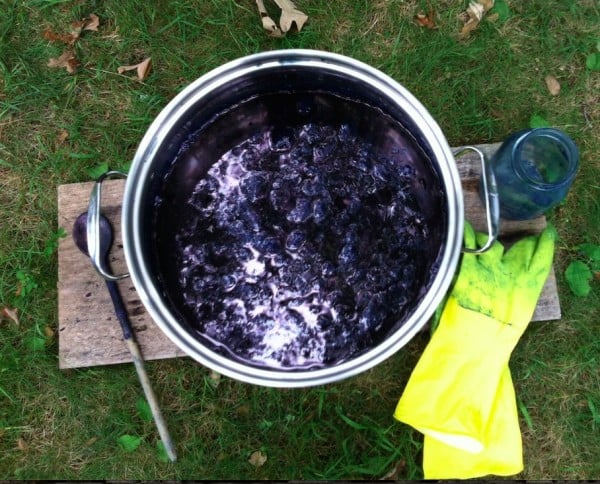
Each week, we are emailed with questions from our natural dye community asking simple and complex questions that we thought might be worth sharing. Here are a handful from this week answered by natural dyer in chief, Kathy Hattori, Founder of Botanical Colors:
Is there any way to remove iron from fabric to brighten it up?
Iron is a reliably “permanent” mordant, which is why it is used to enhance light and “washfastness” with dyes that are weak in these categories. I have not seen a reversible method for removing iron.
I keep getting mixed answers from people about dyeing with plants from my yard and whether I need to mordant or not when using them. Advice?
I think some of the confusion arises over what plant we’re talking about. Many plants contain high levels of tannins and these can be used to mordant and dye in one step, rather than using the traditional mordant method with aluminum sulfate or aluminum acetate.
Traditional tannin mordants include:
Common garden and kitchen tannins include:
- Tea
- Coffee
- Oak leaves, bark and acorns
- Sumac berries
- Walnut leaves, hulls, bark
- Other deciduous tree leaves and bark
So when you see someone explaining that they mordanted with oak gall tannin and no mention of alum, what they are saying is that they are using the natural plant tannins to mordant their fiber. Additionally, the plant mordant also usually dyes the fabric while mordanting, so you get both the advantages of a plant mordant and a color from the plant. If you have plants in your yard that are high in tannin, then yes, it is indeed possible to mordant and dye using only the plants. The real fun starts if you decide to add a metallic mordant, such as iron to your tannin-based mordant bath. Suddenly you will get dark shades from the iron and tannin reaction. If you decide to first mordant in tannin, then mordant in alum, you will find that often the dye color from the plant is brighter. After all this mordanting, you can then apply a dyestuff such as madder or weld or lac to the fibers and get beautiful, rich shades.
The other difference you may observe over time is between the durability and lightfastness when using a metallic mordant salt, such as alum versus using a tannin alone. Typically, the metallic mordants increase wash and lightfastness when used in combination with plant tannins.
My advice to you is to create a detailed list of the plants and their parts you are using. Note if it performs well as a plant mordant, or if you get better results from adding iron as a post-mordant, or alum as a post-mordant. It should super interesting to see how the colors change depending on the mordant you’ve used.
Can I compost a 1-2-3 indigo vat after I’ve exhausted the vat?
The ingredients should be safe for composting, and we recommend lowering the pH of the vat by using a small amount of white vinegar, stir well, and then carefully dispose of the vat. The pH of the vat should be 7 and you can measure with pH indicator strips.

